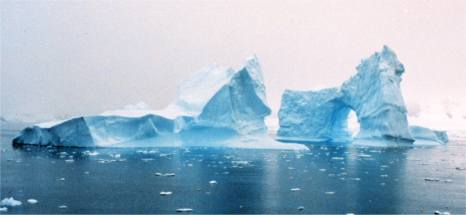Quantum Weirdness and Water
Water is one of the planet’s weirdest liquids, and many of its most bizarre features make it life-giving. For example, its higher density as a liquid than as a solid means ice floats on water, allowing fish to survive under partially frozen rivers and lakes. And unlike many liquids, it takes a lot of heat to warm water up even a little, a quality that allows mammals to regulate their body temperature.
But computer simulations show that quantum mechanics nearly robbed water of these life-giving features. Most of them arise due to weak hydrogen bonds that hold H2O molecules together in a networked structure. For example, it is hydrogen bonds that hold ice molecules in a more open structure than in liquid water, leading to a lower density. By contrast, without hydrogen bonds, liquid molecules move freely and take up more space than in rigid solid structures.

Yet in simulations that include quantum effects, hydrogen bond lengths keep changing thanks to the Heisenberg uncertainty principle, which says no molecule can have a definite position with respect to the others. This destabilizes the network, removing many of water’s special properties. “It breaks down big time,” says Philip Salmon of the University of Bath in the UK.
How water continues to exist as a network of hydrogen bonds, in the face of these destabilizing quantum effects, was a mystery.
continue to read here: Water’s quantum weirdness makes life possible